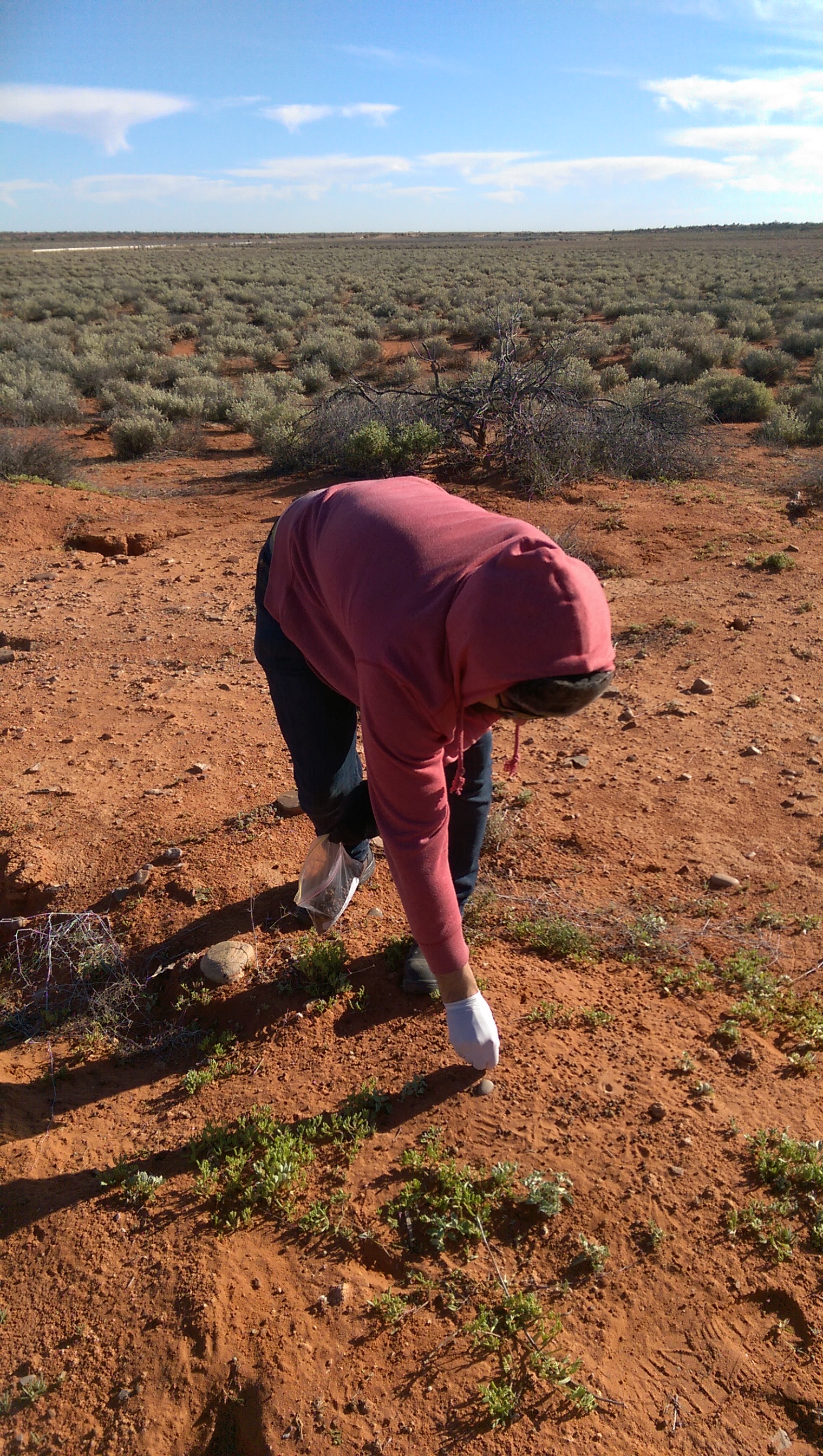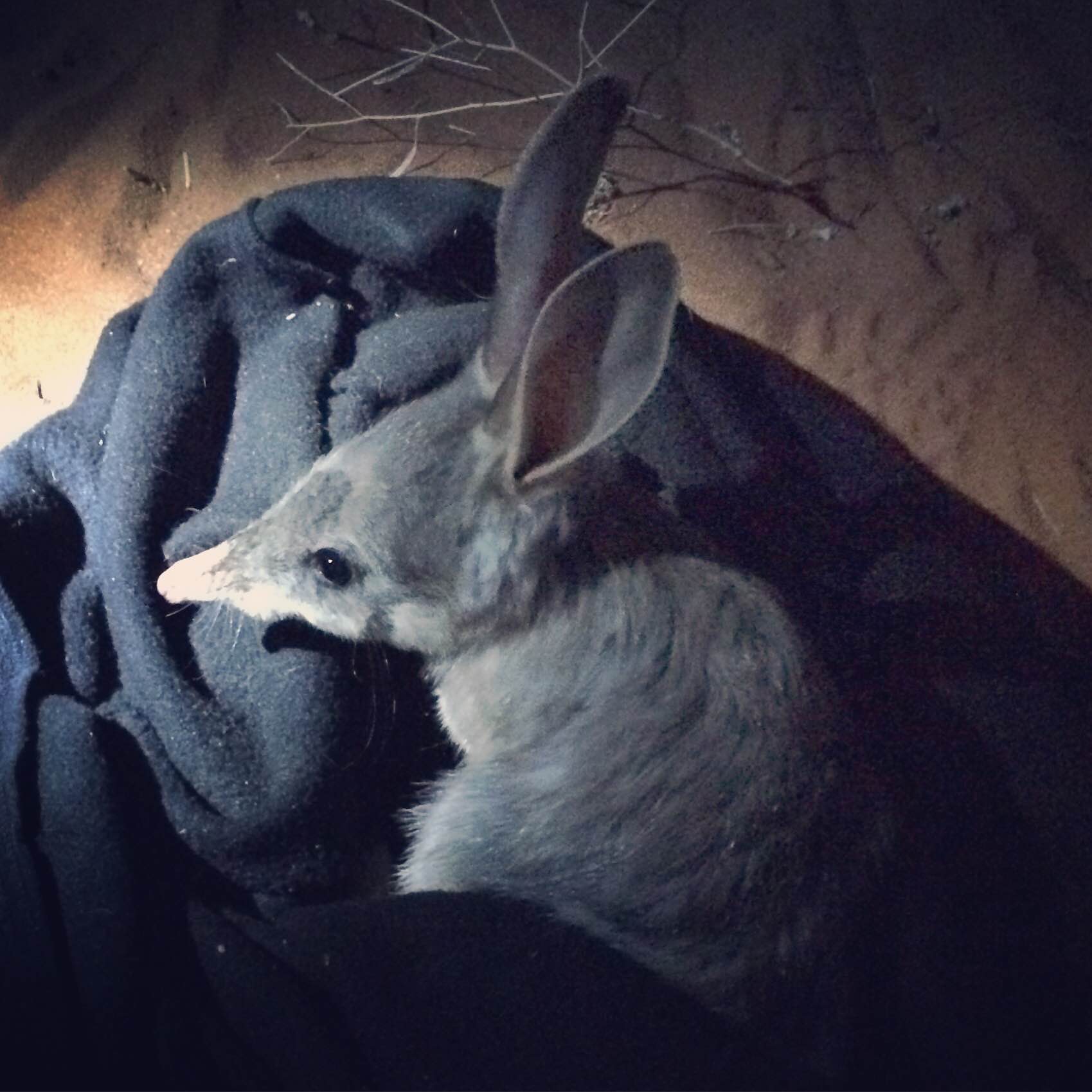Since 2000 a population of Greater bilbies has been able to flourish within the predator free fence exclosures at Arid Recovery Reserve. Within the fenced areas, all feral cats, red foxes and dingoes have been excluded. Fenced reserves, like Arid Recovery, provide a safe haven within which endangered and legally extinct species can breed up to high densities, due to the lack of placental predators. However what are the consequences of living in an environment where there are no predators? Is it possible to have a future beyond the fence, if you have never lived with a predator?

As part of my PhD, looking at predator recognition by native mammals, such as the bilby, I wished to help answer some of these questions, by first establishing whether bilbies could tell the difference between predator odours. Using faeces from two introduced predators (dog and cat), a herbivore (rabbit) and no odour, we were able to observe the behavioural response of bilbies to these odours. Bilbies have shared over 3000 years of co-evolutionary history with dingoes/dogs, but less than 200 years with cats. We placed faeces at the entrance of bilbies’ burrows.

The decision to emerge from a refuge, such as a burrow, requires prey to estimate predation risk outside the shelter versus the benefits of potential rewards. The results showed that bilbies spent more time only partially emerged (with at most their head and shoulders out) from their burrows when dog faeces were present, in comparison to cat and rabbit faeces and the control.

Our results are consistent with the idea that a prey species ability to respond to the odours of predators scales with their period of co-existence. As such the bilbies nose knows the smell of their long term predator, the dog. Maybe it’s time we consider dingoes as native because bilbies recognise the scent of dingoes, but not cats.
If you would like to know more about our results and how we studied this, you can read our recently published paper about this research here.





















